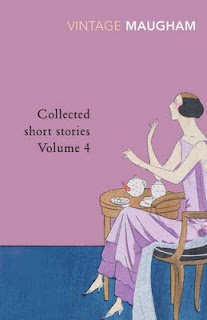“The Letter” first appeared in 1926 as a short story by W. Somerset Maugham in his collection The Casuarina Tree (later published by Vintage in Collected Short Stories Volume 4). In 1927 Maugham dramatised “The Letter” as a play which was performed in London and on Broadway. First filmed by Paramount in 1929, Warner Brothers remade the picture in 1940.
 Set in British Malaya, Leslie Crosbie is the wife of a farmer living on a rubber plantation. Leslie shoots and kills a man named Hammond, allegedly in self defence when he attempts rape. Arrested and put on trial for Hammond’s murder, the case is relatively straight forward but Leslie’s lawyer, Howard Joyce, worries about how to explain the six shots she fired at close range, four of which land in Hammond’s back.
Set in British Malaya, Leslie Crosbie is the wife of a farmer living on a rubber plantation. Leslie shoots and kills a man named Hammond, allegedly in self defence when he attempts rape. Arrested and put on trial for Hammond’s murder, the case is relatively straight forward but Leslie’s lawyer, Howard Joyce, worries about how to explain the six shots she fired at close range, four of which land in Hammond’s back.
Before trial, Joyce is advised of incriminating evidence that could damn his client in the form of a letter Leslie wrote to Hammond. Leslie’s husband Robert tells Joyce to spare no expense to free his wife from jail or possible hanging, so Joyce secures the letter for $10,000 despite the compromise to his ethics and potential legal repercussions. Joyce is conflicted not knowing whether his client is an innocent woman defending her honour or a calculating adulteress who committed cold blooded murder.
The short story is delightful, littered with Maugham’s clever dialogue and colourful imagery. I love the way he describes the Chinese woman residing with Hammond as being stout with a “broad, phlegmatic face”. Another example is the way Leslie’s face changes when confronted with the letter:
“… as she read a horrible change came over her. Her colourless face grew dreadful to look at. It turned green. The flesh seemed on a sudden to fall away and her skin was tightly stretched over her bones. Her lips receded, showing her teeth, so that she had the appearance of making a grimace.”
The 1940 film directed by William Wyler stars the brilliant Bette Davis at her melodramatic best as the plucky but plain Leslie Crosbie. The black and white cinematography punctuates the atmosphere, with mood lighting through venetian blinds or in the form of shadows from the full moon. The score by Max Steiner swells and flourishes to dramatic effect.
 Thankfully the film makes the most of Maugham’s dialogue. Some elements of the story were changed to add to the drama in the film version. For example, in the story Mr Crosbie travels with Joyce to collect the letter while in the film Leslie goes to allow for a wordless, yet dramatic meeting of the two women in Hammond’s life. The source of the funds to purchase the letter varies in each version. But the largest change is with the film’s ending, allowing audiences to see that ‘justice’ is done with Leslie getting her comeuppance.
Thankfully the film makes the most of Maugham’s dialogue. Some elements of the story were changed to add to the drama in the film version. For example, in the story Mr Crosbie travels with Joyce to collect the letter while in the film Leslie goes to allow for a wordless, yet dramatic meeting of the two women in Hammond’s life. The source of the funds to purchase the letter varies in each version. But the largest change is with the film’s ending, allowing audiences to see that ‘justice’ is done with Leslie getting her comeuppance.
The film was nominated for seven Academy Awards including best picture, director, actress, supporting actor (James Stephenson as Joyce), cinematography, editing and score.